Karl's RF projects page
Station antennas
a 3-element yagi beam antenna for 1 1/4 meters or 70 ceni-meters K-built, light Duty
a 3-element yagi beam antenna for 1 1/4 meters or 70 ceni-meters K-built, heavy Duty
A simple dipole K-built, for 1 1/4 meter band; medium duty
A simple dipole K-built, for 1 1/4 meter band; heavy duty
K-built, a dual band unity gain antenna set For 1 1/4 and 2 meter band; medium duty
Repair an antenna Collinear (Station Master) type
Build a new antenna Collinear type
Evaluation of Arrow's 1 1/4 meter yagi antenna 220-S5, light duty
Evaluation of Tram's VHF antenna 1487, base, light duty
Evaluation of Tram's dual band antenna 1181, mobile, light duty
Evaluation of Tram's CB antenna mobile, light duty
Evaluation of Laird's 70-cm antenna FG 4405, base, medium duty
Evaluation of TeleWave's 70-cm antenna ANT450F2, base, heavy duty
Evaluation of TeleWave's 70-cm antenna ANT450F10, base, heavy duty
Evaluation of Sinclair's 70-cm antenna SC320-SF4SNM, heavy duty
Evaluation of Diamond's antenna X50N, base, medium duty
Evaluation of Crushcraft's antenna CRX-150, base, light duty
Evaluation of Hygain 2-meter yagi antenna
Evaluation of Sinclair SD2352 open loop for 2-meters
Evaluation of Sinclair SD210 open loop for 2-meters
Evaluation of Comm Products 874F-70 open loop for 2-meters
Repair for the Sinclair SRL114 open loop antenna
Evaluation of PC Tel Yagi antenna for 70-cm
A look at corner reflector antennas
A look at commercially made antennas Just to buy
Mobile(vehicle) antennas
Evaluation of Comet's dual band antenna B10, mobile, light duty
Evaluation of Comet's dual band antenna 460S, mobile, light duty
Evaluation of Diamond's dual band antenna NR-72BNMO, mobile, light duty
Hand-held (portable) antennas
Evaluation of HYS-701N HT antenna (whip)
Evaluation of Kenwood's TH-F6 OEM whip
Evaluation of Diamond's SRH-320A whip
Evaluation of Diamond's SRH-701A whip
Evaluation of Diamond's SRHF10 stubby
Evaluation of Comet's SMA209 HT whip
Evaluation of Comet's CH-32 HT stubby
Evaluation of Comet's SMA501 HT stubby
Evaluation of "BingFu" knock-off HT stubby
Evaluation of a Fujian Quanzhou Huahong, HH-S518 HT stubby
Evaluation of a no-name, HF-20 HT stubby
Evaluation of a sorta no-name, KS-K-Storm HT stubby
Evaluation of HYS NA-701 HT whip
Line, terminations and cavities
Hard line splicing Cheap solution
Connector discussion For RF
Crimp connectors
Clamp connectors
Kenton's article about RF cable (assy) selection
Cavity and duplexer notes
Cavity Band change from 2 to 1.25 meters
Engineering, grounding and other projects and notes
Grounding discussion using the R-56 as a standard
A look at RF paths Where these antennas could help
Path Engineering Calculate (FM)Fade Margin
Receiver desense Testing system performance
RF and RFI management Practices and notes for remote sites
Solving IM By Softwright, Inc.
External RF amplifier For the IFR 500 and 1200 service monitor
The commercial rated antennas are best for harsh weather conditions, especially for winter.
While the fiberglass radome type is the best for that the open loop types are good too so, should be considered for your installation
that is not at a high site prone to icing loading.
However, you need to be aware that some of these open loops will work well in the amateur band.
For example, here shows an excellent return loss figure for the VHF-Hi Band (Commercial) range, but just barely clears the accepted "standard" in the amateur band.
This sweep/plot shows that some of the open loop types are not broad banded as previously thought.
Therefore, it's best to do you homework before ordering such an expensive antenna.
Incidentally, all antennas at high site subject to wild winter conditions should be supported on the bottom and top.
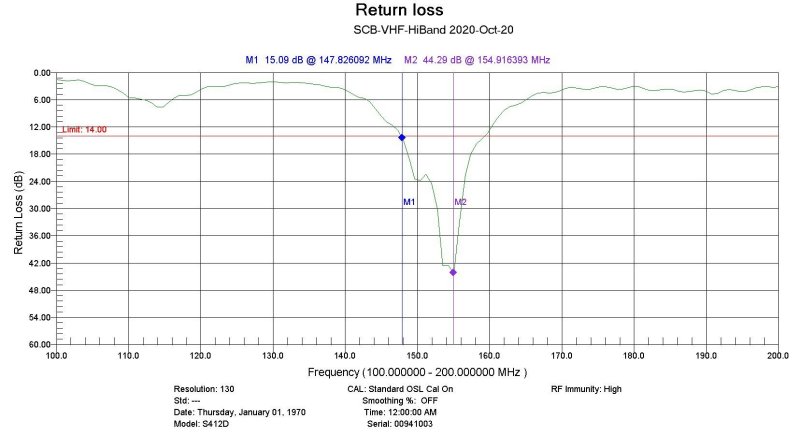
When installing line and antenna it's important to properly seal the connections. The line termination is to be lightly "snug" when connecting to the antenna.
This can be done with plyers; just be careful not to overtighen.
Normally, mastic pad (AKA "butyl") is used followed by a good quality electrical tape; two layers if using the typical 3/4" tape.
The Author sometimes uses what's available which would be Scotch "700", "33" or "88". The latter is the first choice because it works well enough in cold weather.
Some times at the MCP/home the Author will use only a single layer of tape as an experiment.
Shown here is two adaptors removed from service after being on the tower for a decade-all appears to still be clean.
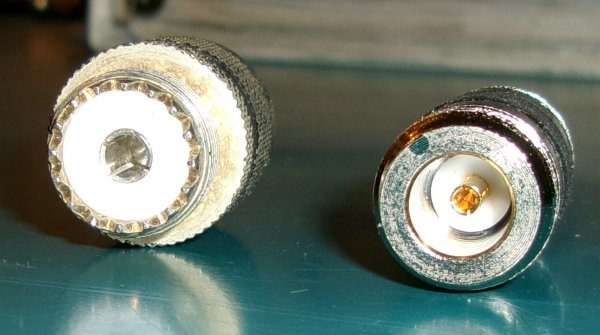
Here's some example of sealing materials you can purchase:
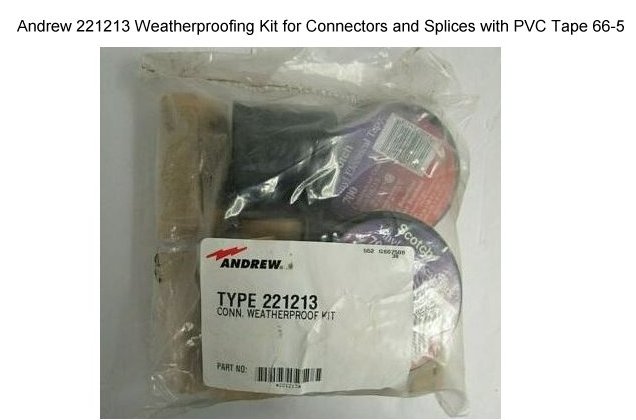
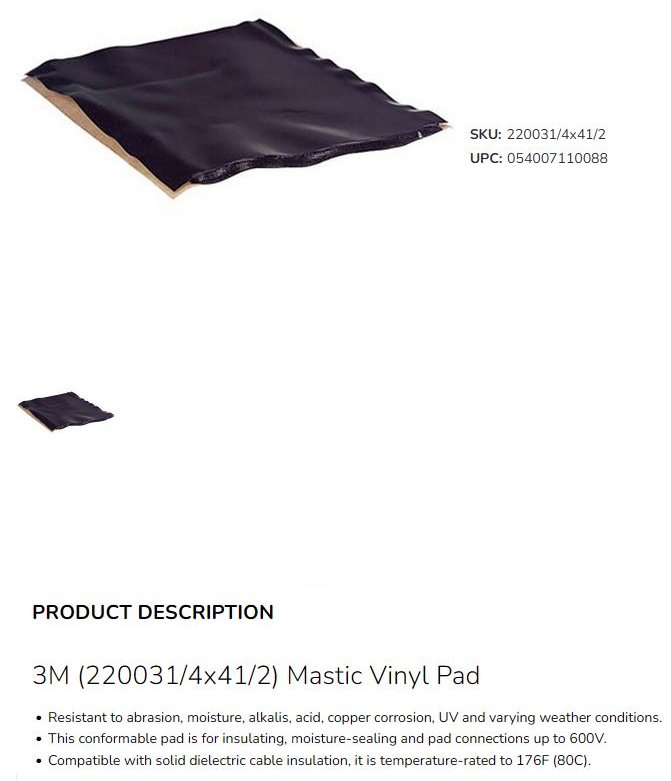
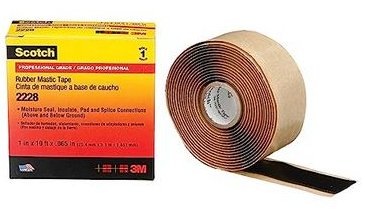
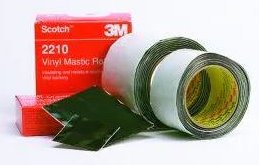
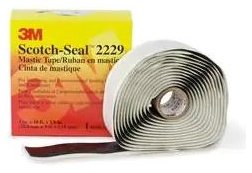

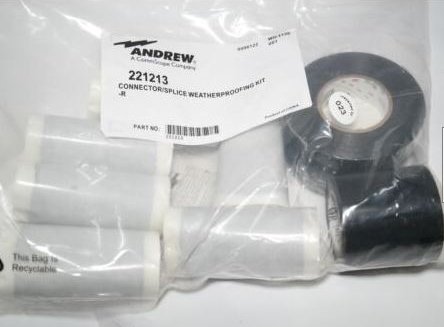
In the event the Author made a "typo" or otherwise, unclear documentation a notification would be appreciated.
![[SRG home Direction]](images/srghome.gif)










![[SRG home Direction]](images/srghome.gif)